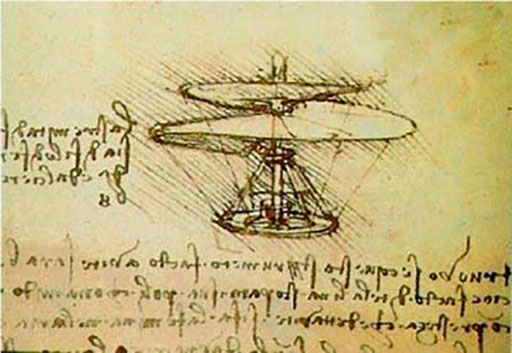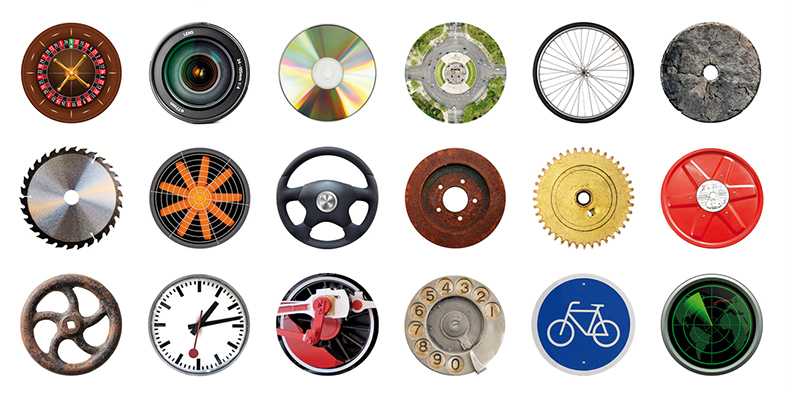2.2 Distinguishing terms: invention
In the following activity, you will look at a case study relating to invention.
Case study: Invention
Leonardo da Vinci invents the aerial screw
The aerial screw is one of Leonardo da Vinci’s most famous and surprising inventions, regardless of the fact that it could never work in practice. The illustration (pictured) is from his own sketchbook and was drawn more than 500 years ago. Da Vinci was investigating a variety of theoretical problems, such as the dynamic and physical characteristics of air, and it seems that his intention was to demonstrate that air could be compressed and therefore gain material density. Da Vinci’s aerial screw anticipated some aspects of the modern helicopter, but there was no possibility of building a functioning prototype with the materials available in his time. He also sketched several other ideas for a flying machine. These included a glider with intricately-drawn wings that were derived from a detailed study of birds.

Activity 4
- Can you think of another example of invention? For instance, you could select a new technology, a product, or a less tangible invention such as a process or service. Describe your invention in the box below.
Discussion
Just as in the case of some discoveries, it may not have been possible to convert Leonardo da Vinci’s flying machine invention into a working technology at the time, however, even ‘failed’ or ‘stalled’ inventions can still contribute to the innovation process by passing on ideas that may only be fully realised in the future. For the innovation scholars Freeman and Soete (1997, p. 6, cited in Conway and Steward, 2009, p. 9), an invention is, ‘an idea, a sketch or model for a new or improved device, product, process, or system.’ They also note that, although an invention may sometimes be patented, it may not necessarily lead to a technical innovation.
